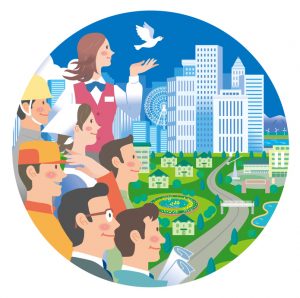Do you like to cook? I do, when I have the time and energy (which seems to be less and less often lately). I enjoy getting new recipes and giving them a try. But I have developed a healthy skepticism about recipes. A recipe is just one of many ways to accomplish more or less the same thing.
Let’s take mashed potatoes, for example. I have a recipe that says to use five russet potatoes, two tablespoons of butter, a cup of milk, and salt and pepper. Fine–delicious. Last weekend, though, my daughters and I had fun putting cream cheese in our mashed potatoes. I never saw that in a recipe (frankly I was just trying to get rid of some cream cheese), but it was great. Watching your weight? Substitute chicken stock for milk. Got some cheese in the fridge? Grate it and throw it in. Some chives in your garden? Nice. You get the idea: many ways to come up with a creamy, yummy version of potatoes. Be creative and adapt to your tastes and needs.
So it is with peace processes. Lately, many people are calling for including civil society in peace negotiations. There are good reasons for this–there’s a lot of research showing that when civil society is included, there is more likely to be a comprehensive, lasting peace. I suspect, though, that this inclusivity terrifies mediators and angers governments and rebel leaders, who probably imagine activists and advocates of one or another cause sitting at the negotiating table as equal parties, each with equal power to block consensus on the terms of an agreement.
It needn’t be so. You don’t have to follow that recipe. As with mashed potatoes, you can figure out other ways to accomplish the same goals.
What would those goals be? My own research identified two key ways the inclusion of civil society helped advance the cause of peace. First, civil society participants help steer the negotiations away from private goodies for armed actors (such as amnesties for war crimes and high-level government posts for rebel leaders) and towards addressing underlying sources of conflict such as economic inequalities, corruption, human rights failures, and discrimination against minority groups. Second, civil society groups promote and support the peace process through educating the public, assisting in implementation tasks, and generally advocating for peace and for the peace settlement once reached.
There are lots of ways to get to those goals. For example, there are some successful examples of a separate civil society consultation process set up to inform the peace negotiations. In Guatemala in the early ’90s, the parties to the peace talks agreed to form a Civil Society Assembly which included representatives from across civil society as well as political parties. This Assembly developed a consensus on recommendations for the negotiations, most of which were adopted in the terms of the peace accord. In the Philippines, the government set up a National Unification Commission that undertook a massive consultation effort starting at the provincial level, with results from that level feeding into the regional level and then the national level. These consultations produced a set of recommendations called the Six Paths to Peace, which influenced not only the peace process with the Moro National Liberation Front in the ’90s but even the peace process with the Moro Islamic Liberation Front a decade later. I was surprised to see how much influence these consultations had in both countries. I’m not saying separate consultation processes are the only way to go, but rather this is one variation on how to get the voices of civil society into the mix.
There’s not a set recipe for peace processes. On the contrary, making peace (like making anything else) requires creativity and adaptability.
Leave a Reply